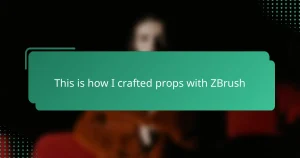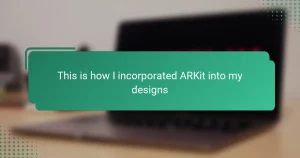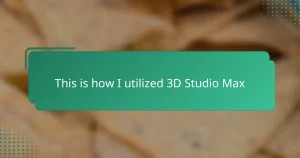Key takeaways
- Science fiction props effectively blend imagination and storytelling, making them integral to captivating narratives.
- Photoshop enhances prop design by allowing for experimentation with colors, textures, and realistic effects, streamlining the creative process.
- Mastering Photoshop can be challenging, requiring a balance between realism and stylization while managing tools and file sizes.
- The future of Photoshop may include AI integration and immersive design technologies, fostering more innovative prop creation.
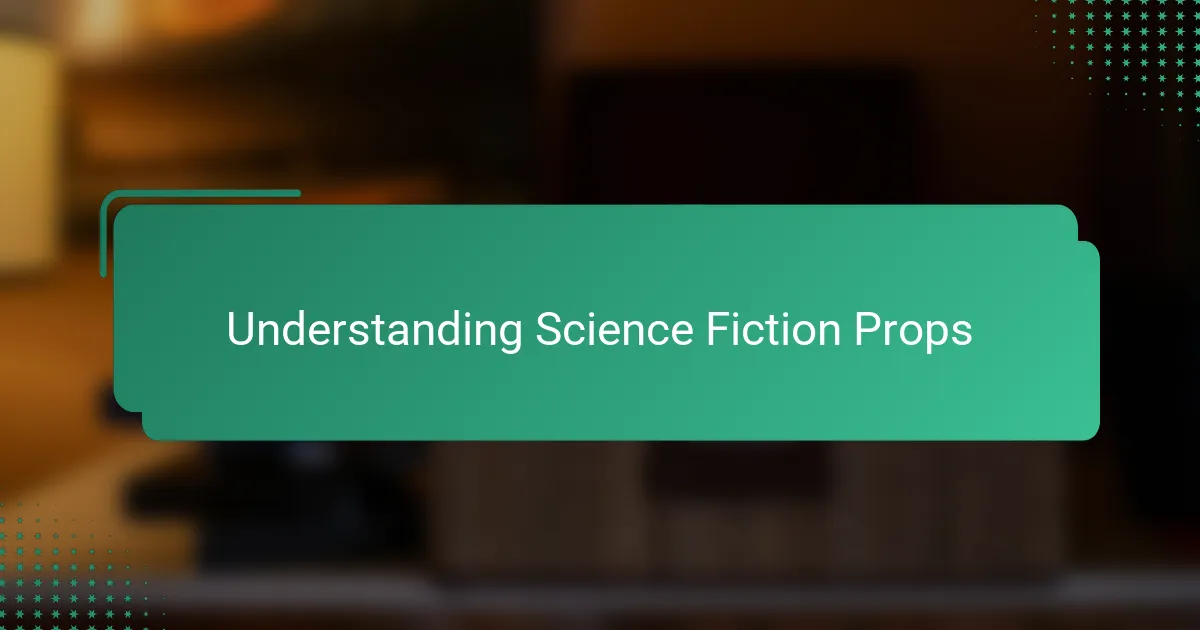
Understanding Science Fiction Props
Science fiction props have always fascinated me because they bring imagined worlds to life, making the impossible seem tangible. When I first encountered intricate designs of futuristic gadgets, I wondered how much thought and craftsmanship went into creating something that feels both alien and believable. It’s this blend of creativity and practicality that makes science fiction props so captivating to study and appreciate.
What strikes me most is how these props must balance imaginative aesthetics with storytelling. A simple prop like a glowing device or an otherworldly weapon tells a story without words, hinting at advanced technology or unique cultures. I often find myself pondering how every detail, even the smallest button or texture, contributes to the prop’s authenticity and the overall narrative.
Have you ever noticed how some props become iconic symbols of their universes? That’s no accident. Designers pour their passion and understanding of futuristic concepts into every creation, knowing these objects will fuel audiences’ imaginations for years. This connection between science fiction props and storytelling is what keeps me so engaged whenever I dive into the subject.

Overview of Photoshop in Prop Design
Photoshop quickly became an essential tool for me when I started designing science fiction props. I remember struggling with sketching details by hand until I discovered how much Photoshop lets you experiment freely with colors, textures, and lighting effects. It felt like having a digital workshop where mistakes weren’t costly but opportunities for creativity.
What I find most powerful about Photoshop in prop design is its ability to blend imagination with realism. Have you tried adding subtle wear or glowing effects digitally? It instantly transforms a flat design into something that feels like it belongs on screen. This digital layer of polish helps me push ideas beyond what traditional methods could easily achieve.
Sometimes I wonder how designers managed intricate sci-fi props before Photoshop existed. From my experience, it saves hours of trial and error and gives more control over fine details. For anyone passionate about creating believable futuristic gadgets, Photoshop is more than software—it’s a creative partner.
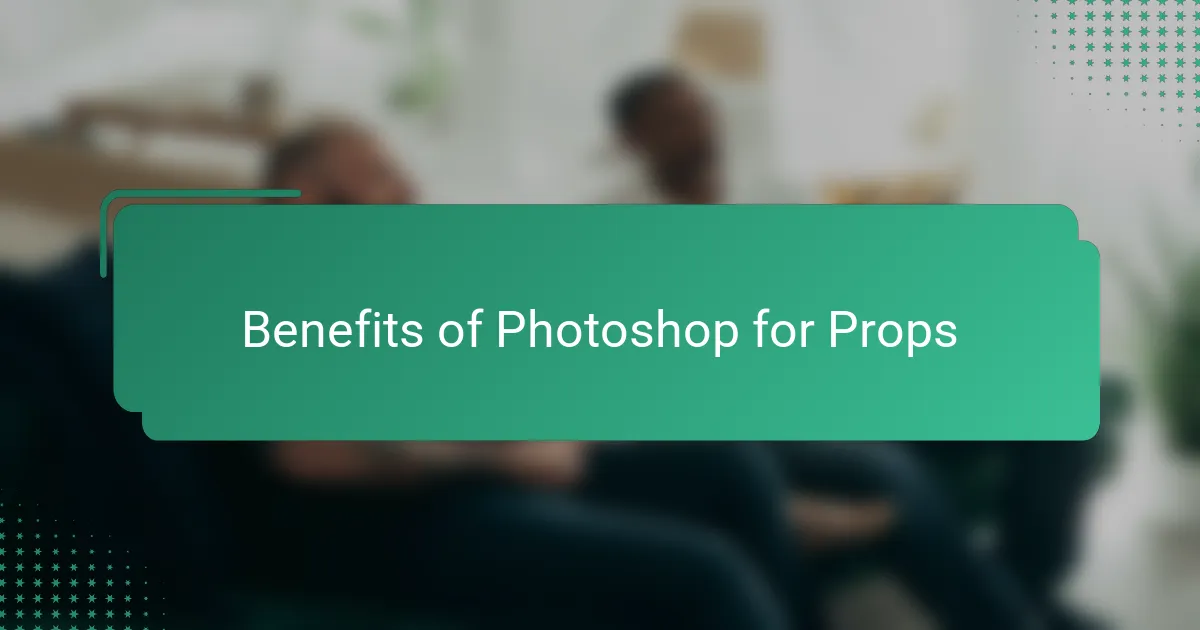
Benefits of Photoshop for Props
One of the biggest benefits I’ve found using Photoshop for props is the freedom to experiment without fear. I can try out bold color schemes or textures and immediately see how they look, which keeps my creativity flowing without getting stuck on mistakes. Have you ever felt stuck trying to fix a small detail on a physical model? Photoshop removes that frustration by letting me tweak endlessly.
Another advantage that stands out to me is how Photoshop makes it easy to add realistic effects. Whether it’s creating a worn metal surface or simulating futuristic lighting, these subtle touches bring props closer to what I imagine when I dream up a sci-fi world. From my experience, that fine-tuning is what separates a good design from one that truly convinces the eye.
Finally, Photoshop speeds up the entire design process in a way I didn’t expect. Instead of building multiple physical prototypes, I can iterate digitally and show ideas to collaborators instantly. This quick feedback loop has saved me so much time and allowed more room for innovation, which in my opinion, is crucial when working on complex sci-fi props.
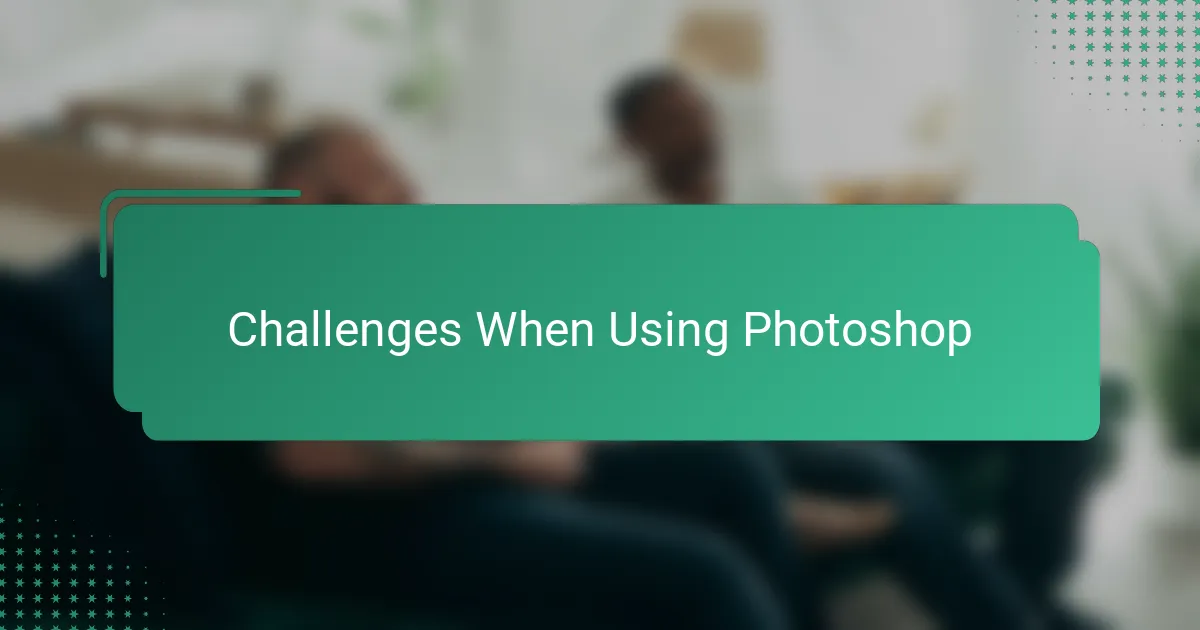
Challenges When Using Photoshop
Photoshop is incredibly versatile, but I’ve found that mastering its vast array of tools can be overwhelming at times. Have you ever opened the software, intending to make a quick edit, only to get lost in endless layers and filter options? That initial steep learning curve can be frustrating, especially when you just want to bring a prop idea to life without diving into technical menus.
Another challenge I often encounter is achieving that perfect balance between realism and stylization. Photoshop offers amazing effects, but it’s easy to overdo it—too much glow or texture can make a prop look artificial rather than believable. I remember spending hours tweaking the same area, unsure if I had crossed the line from cool sci-fi detail into distracting clutter.
Lastly, dealing with resolution and file sizes can be a headache. When working on props meant for high-quality renders or prints, maintaining crisp details without crashing the program requires a constant juggling act. Have you ever had Photoshop slow down or freeze midway through a complex project? That moment always tests my patience, reminding me that even powerful tools have their limits.
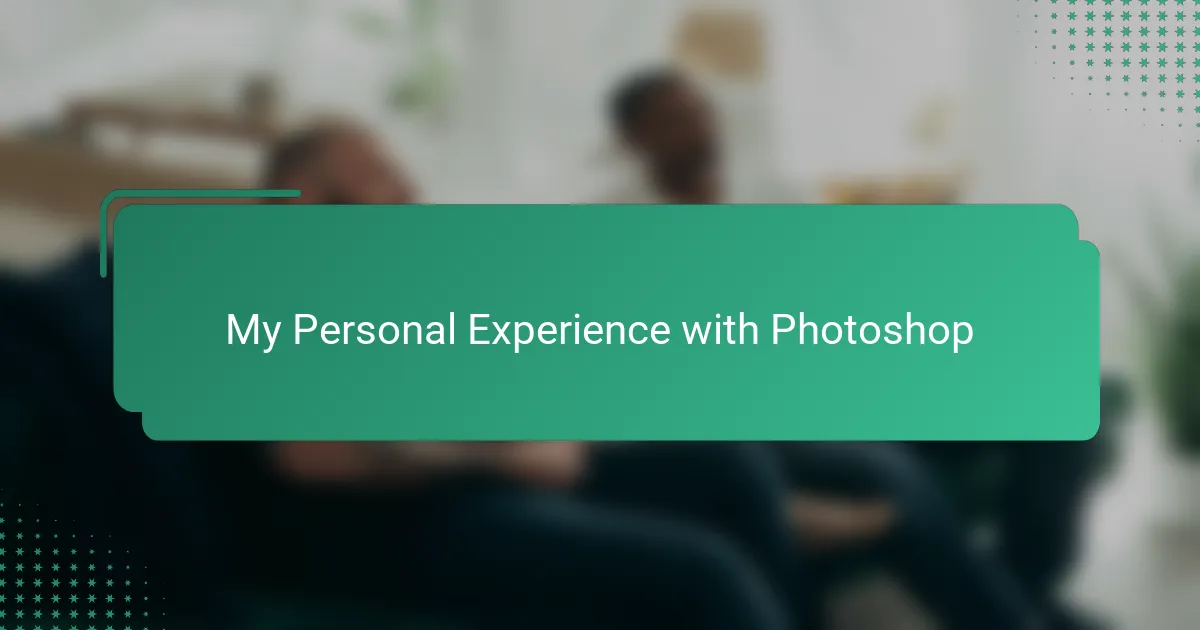
My Personal Experience with Photoshop
When I first opened Photoshop to create sci-fi props, I felt a mix of excitement and intimidation. I remember getting lost in layers and brushes, unsure if I was actually making progress or just adding clutter. But slowly, with each experiment, that digital canvas became a space where my ideas could breathe and evolve.
One moment that sticks with me is when I added a subtle glow to a futuristic control panel design. That small effect transformed a flat image into something that felt alive and real. It was thrilling to see a simple tweak bring so much depth—something that, back then, I never imagined doing without Photoshop.
Have you ever found yourself endlessly undoing and redoing a detail, chasing the perfect look? I have, countless times. It’s frustrating but also oddly satisfying because it pushes me to refine my vision and learn the software’s nuances along the way. Photoshop may be complex, but for me, it’s become a key creative partner in crafting props that tell a story.
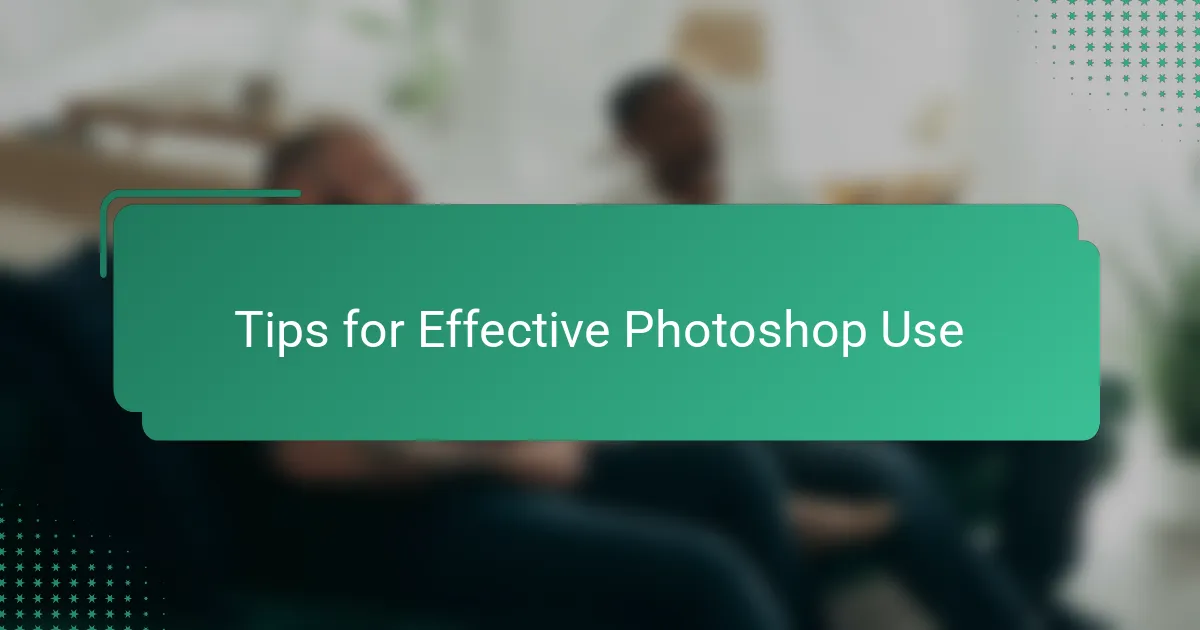
Tips for Effective Photoshop Use
One tip I’ve found essential is to always use layers thoughtfully. Do you ever get overwhelmed by too many changes all at once? By isolating elements on separate layers, I can experiment freely without worrying about ruining what I’ve already done. This approach keeps my workflow organized and saves me from those moments of panic when a single mistake could mess up hours of work.
Another technique that consistently helps me is making use of Photoshop’s blending modes and opacity settings. It’s amazing how a subtle overlay or a softened edge can shift a prop from looking flat to feeling tangible. Early on, I underestimated these features, but now I treat them like secret ingredients that add texture and depth, making a design truly pop.
Finally, don’t forget to zoom in and out frequently. I sometimes catch myself focusing too much on tiny details, only to miss how the prop reads as a whole. Stepping back—digitally—helps me balance the big picture with the fine points. Have you noticed how a little perspective can instantly highlight what needs adjustment? This habit has saved me from countless revisions and improved my designs immensely.
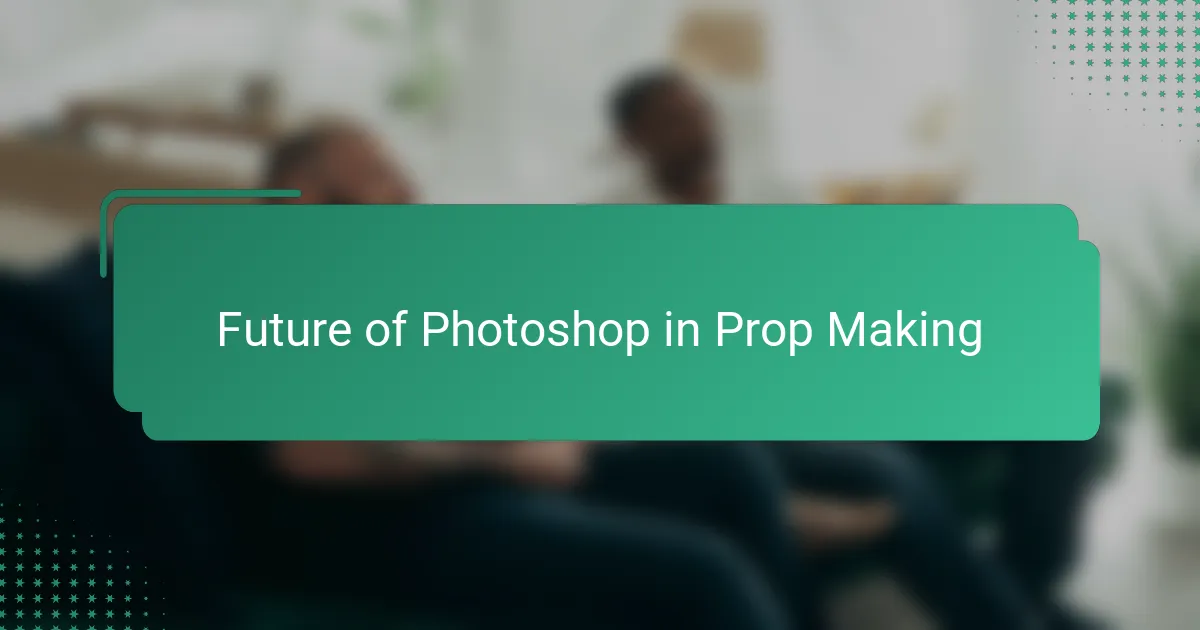
Future of Photoshop in Prop Making
Thinking about the future, I’m convinced Photoshop will become even more indispensable in prop making. Do you ever wonder how emerging AI-driven tools might integrate with Photoshop to automate complex textures or generate realistic effects at the click of a button? From my experience, those innovations could free up more time for creativity, letting designers focus on storytelling rather than technical hurdles.
I also imagine Photoshop evolving to support immersive design workflows, maybe through VR or augmented reality interfaces. The idea of sculpting or painting props in a 3D virtual space sounds thrilling to me—like stepping inside your own creation. This shift could radically change how we perceive and build sci-fi props, blending digital and physical methods seamlessly.
But beyond technology, what excites me most is how Photoshop might continue to inspire new aesthetics and ideas. As the software grows, it might encourage bold experimentation with colors and forms that push prop design into uncharted territories. I can’t wait to see how future artists harness these tools to bring even stranger, more captivating worlds to life.
